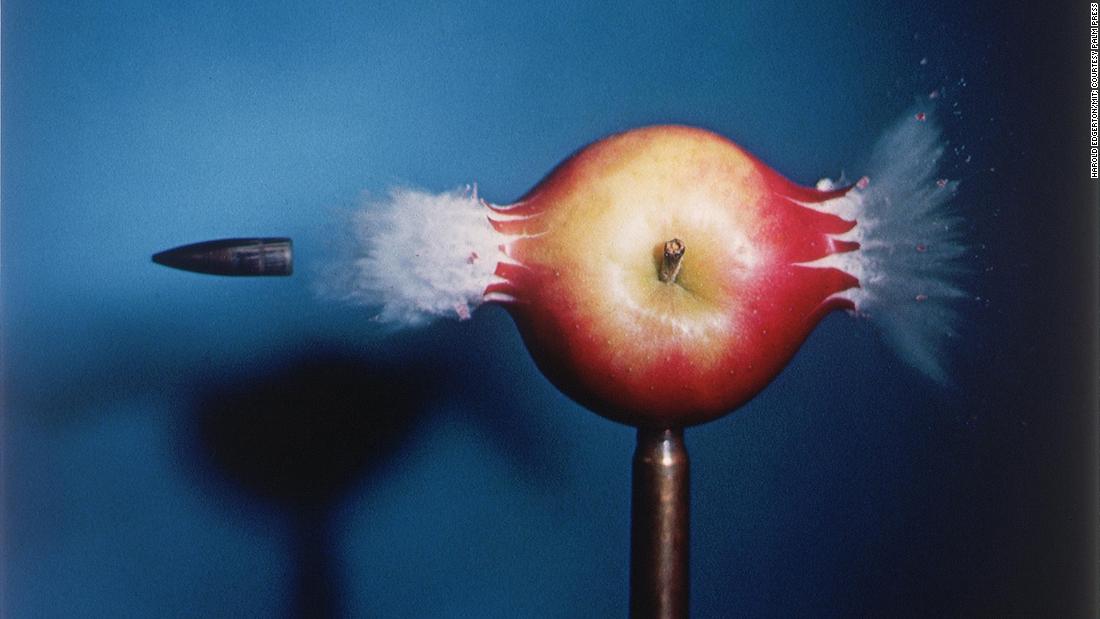
Exploding with energy but perfectly still, Harold “Doc” Edgerton’s 1964 image of a .30-caliber bullet ripping through an apple showed an otherwise unseeable moment in captivating detail. The scene took on a serene, sculptural beauty as the disintegrating apple’s skin burst open against a deep blue backdrop.
Edgerton, who died in 1990 aged 86, is considered the father of high-speed photography. Camera shutter speeds were too slow to capture a bullet flying at 2,800 feet per second, but his stroboscopic flashes — a precursor to modern-day strobe lights — created bursts of light so short that a well-timed photograph, taken in an otherwise dark room, made it appear as if time had stood still. The results were mesmerizing and, often, messy.
“We used to joke that that it took a third of a microsecond (one-millionth of a second) to take the picture — and all morning to clean up,” recalled his former student and teaching assistant, J. Kim Vandiver, on a video call from Massachusetts.

The 1964 image has become one of the 20th century’s best-known photographs. Credit: Harold Edgerton/MIT; courtesy Palm Press
While early camera operators had experimented with pyrotechnic “flash powders” that combined metallic fuels and oxidizing agents to produce a short, bright chemical reaction, Nebraska-born Edgerton created a flash that was far shorter and easier to control. His breakthrough was more a matter of physics than chemistry: After he arrived at MIT in the 1920s, he developed a flashtube filled with xenon gas that, when subjected to high voltage, would cause electricity to jump between two electrodes for a fraction of a second.
Yet, it was his 1960s bullet photos that proved some of this most memorable. According to Vandiver, who still works at MIT as a mechanical engineering professor, the challenge wasn’t producing a flash but setting the camera off at just the right time. Human reactions were too slow to take the photo manually, so Edgerton used the sound of the bullet itself as a trigger.
“There would be a microphone out of the picture, just down below,” Vandiver said. “So, when the shock wave from the bullet hit the microphone, the microphone tripped the flash and then you’d close the (shutter afterwards).”
Making of an icon

Another of Edgerton’s famous photos, taken in 1957, shows the crown-like splash produced by milk droplets. Credit: Harold Edgerton/MIT; courtesy Palm Press
There was another factor at play: Edgerton’s artistic eye. The compositional beauty of his images saw them republished in newspapers and magazines around the world, and over 100 of his photos are held by the Smithsonian American Art Museum today. Yet Edgerton rejected the additional title.
“Don’t make me out to be an artist,” he has been quoted as saying. “I am an engineer. I am after the facts, only the facts.”
“We still teach the course, and students still think of weird things to take pictures of,” he said, recalling recent images of colored chalk and lipstick torn apart by bullets. “Apples are boring now.”
